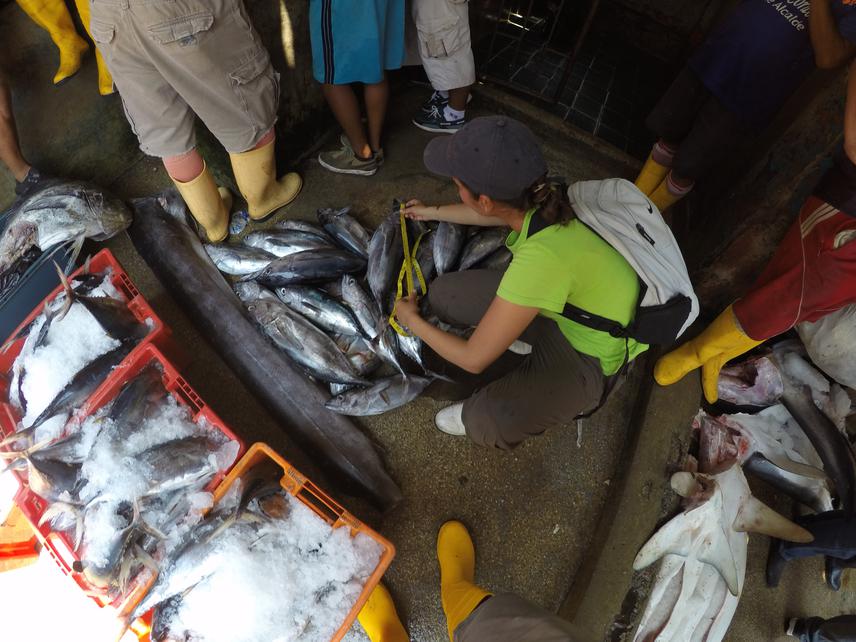Laia Muñoz Abril
Other projects
16 Jan 2017
Genetic Diversity and Population Structure of Yellowfin Tuna (Thunnus albacares) between Ecuador and México
22 Jun 2023
Identifying the Role of the Galapagos Marine Reserve in the Tunas Population from the Eastern Pacific Ocean
This project aims to understand the feeding ecology and determine the genetic structure of populations of yellowfin tuna (Thunnus albacares) in mainland Ecuador waters and the Galapagos Marine Reserve

The exploitation of marine resources in Galapagos is not new, it has gone thru several boom and bust cycles depending on the resource: sea cucumber, lobster, codfish, and tuna. One of the most fished commercial species in the Pacific is the yellow-fin tuna, Thunnus albacares. Exploitation of this species has increased steadily over the past three decades with mortality rates exceeding the maximum sustainable yield. Regional fidelity has been reported for the yellow-fin tuna, and this suggests this species is likely very vulnerable to human activities, thus its conservation is a priority, especially in areas that could serve as breeding grounds.
This project aims to evaluate several aspects of the ecology and biology of the yellow-fin tuna that are relevant to conservation to fish species. We want to understand its feeding ecology, which is the study of structure of feeding relationships among organisms in an ecosystem, this relations are represented as a food-web. Tunas are top predators in the food web and the selective removal of predators in marine food webs can prompt changes downward affecting the structure and stability of whole ecosystems. Determining the trophic position is important, because it can yield information on the age of the tuna captured (adults or juveniles), considering that the removal of juveniles has serious implications for the sustainability of the fishery. This information will give us an estimation of the impacts that overfishing is having on this species in the region.
Secondly, this study will determine the genetic structure of the populations of mainland Ecuador waters and populations of GMR with the aim to determine if it is the same yellow-fin tuna population being exploited in the two regions or if it consists of two different subpopulations. This information is vital for the proper management of fisheries in the country. Outside the GMR and between Galapagos and mainland Ecuador, between 1950 and 2010, about 639000 tons of yellow-fin tuna and bigeye tuna were captured. In order to understand how long the ocean will support the exploitation and what the boundaries of sustainability of fisheries are, it is necessary to gather reliable data on populations and join scientific, economic, political and social efforts to achieve and maintain a proper fisheries management which proves to be critical since it is estimated that around 2048, fish stocks of commercially extracted species will collapse as a result of overexploitation.